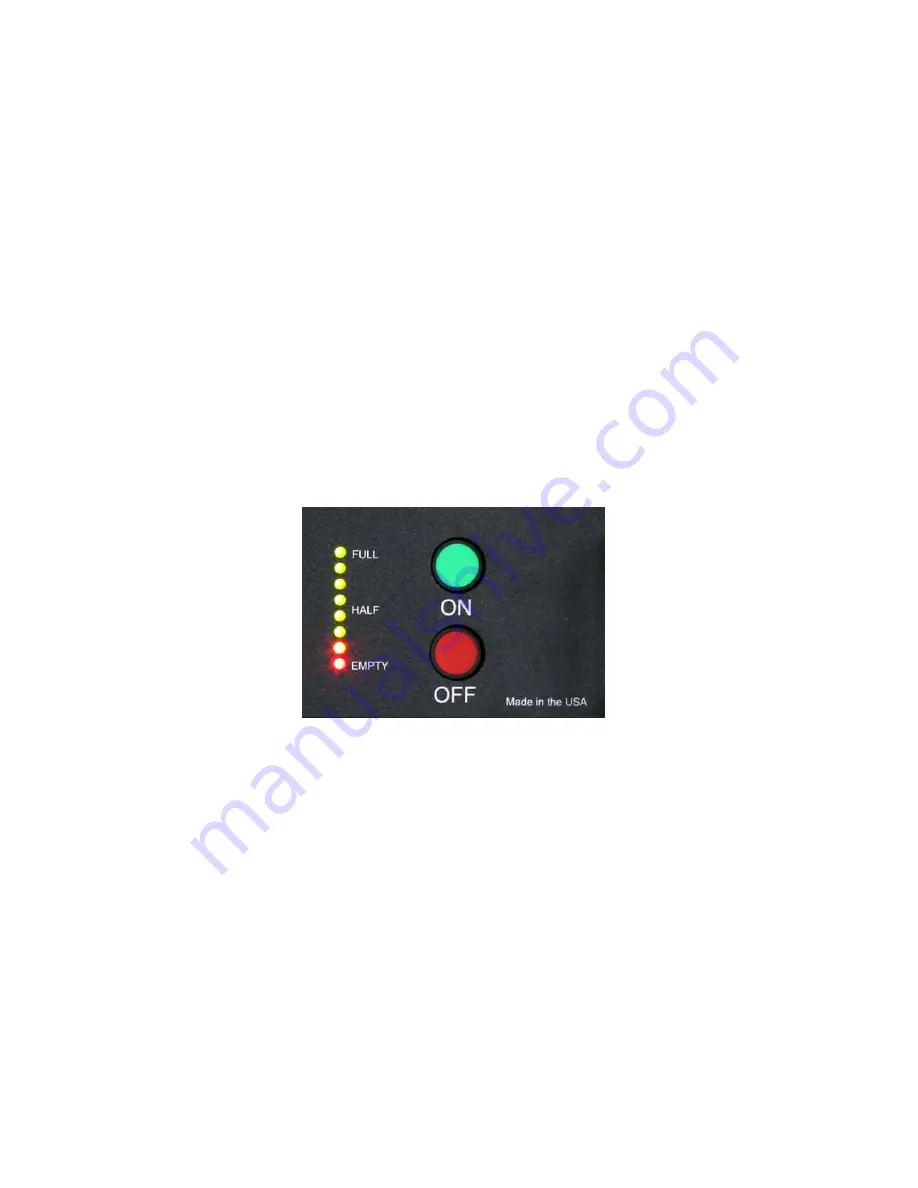
The PSC PowerMax Ultra is designed primarily for use with Sealed Lead Acid
batteries. These batteries do not have the memory effects associated with
NiCad batteries and unlike NiCads, SLA batteries life expectancy is based on
how deeply it is discharged, how long it is left in that condition and the number of
discharge cycles. Thus if you want to get the greatest life from your SLA
batteries, you should keep them charged at all times. This is easily
accomplished with the PSC PowerMax Ultra as it can be used while charging.
The PSC PowerMax Ultra has a built in “fuel” gauge style battery meter that
allows you to visually see the remaining battery capacity at a quick glance. The
PowerMax Ultra is also designed to protect your batteries from over discharge.
When your battery voltage drops to a pre-determined level (approximately
10.8Vdc) the PowerMax Ultra will automatically shut itself off and disconnect the
load from the battery. Thus you cannot over discharge your batteries from
misuse or by accidentally leaving your equipment on over a weekend, etc. The
battery meter is also color coded from green to red as it falls from “FULL”
towards “EMPTY”. When the last red LED turns off, so does the PowerMax
Ultra.
PowerMax Ultra Battery “Fuel Gauge” – shown with batteries fully charged
Because the PSC PowerMax Ultra is equipped with such high capacity chargers,
care must be exercised in the type and condition of batteries to be charged. The
PowerMax Ultra is primarily designed to charge Sealed Lead Acid (SLA)
batteries. Additionally, it is recommended that you
inspect your batteries
weekly
for any signs of damage such as case cracks, leaks or bulging
cases.
Do not connect the PSC PowerMax Ultra to batteries that are
damaged, or beyond their recommended life span.
Failure to heed this
warning could result in product damage and/or personal injury. Bulging battery
cases are a sure sign of a damaged battery and/or shorted battery cell. Charging
a battery in this condition can result in excessive heat build up and battery
venting (hydrogen gas discharge and/or explosion). While charging, the sealed
lead acid batteries should only get slightly warm to the touch. If they get very
warm or hot, something is wrong and charging should be discontinued
immediately and the batteries should be inspected.

































